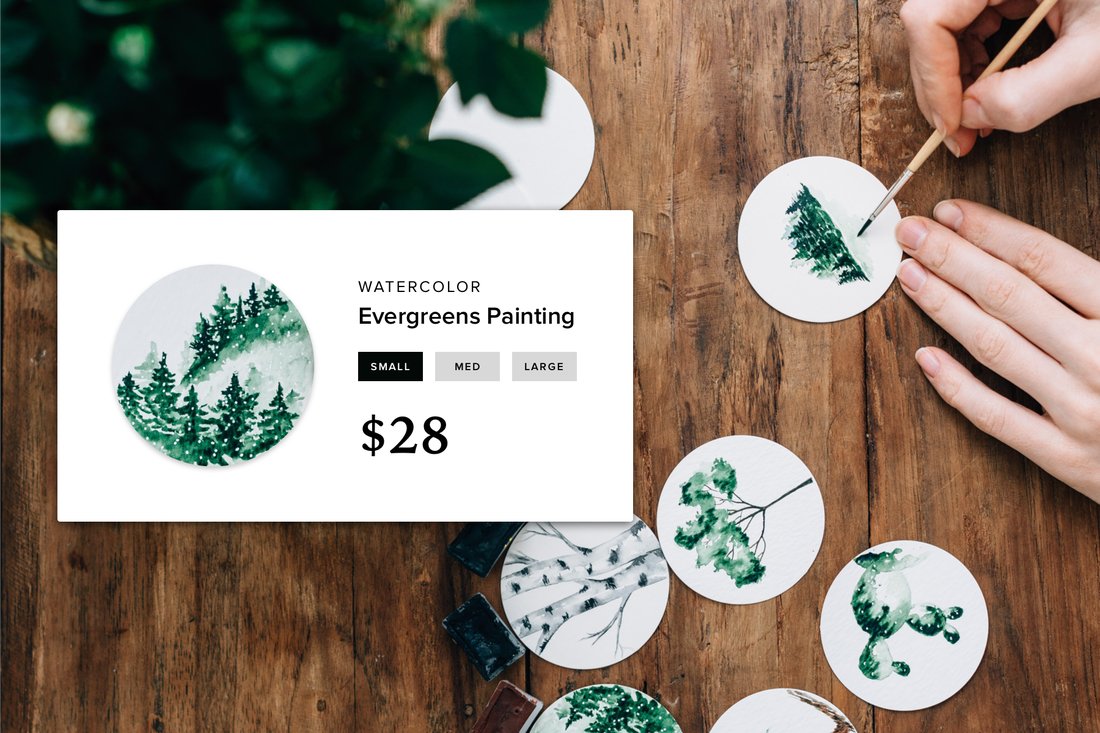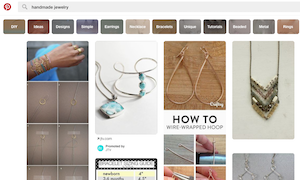Entrepreneurs and small business owners often generate ideas for new products at warp speed. However, moving from idea to prototype can seem like a daunting task. Here are four things to think about when turning your product dreams into a reality.
1. Consider the Method
Shashi Jain has a workshop full of 3D printers where he is often testing ideas, materials and methods for better 3D printed objects and prototypes. As a serial entrepreneur and founder of two 3D printing related ventures — Portland 3D Printing Lab and Mattercompilers.com — he understands the issues involved when moving from idea to physical product.
His advice for inventors or business owners is to consider the 3D printing process on its own, rather than what many do when it comes to prototyping — 3D printing an injection mold to make parts.
“If you design properly, meaning you design with a 3D printer in mind, you can create a fully working part or entire product without moving to another method, such as, injection molding."
Do It Yourself: Shashi Jain points out that you can get very fine surface finishes with an Ultimaker 3 or Zortrax M200, but you can also create smooth outer finished using the “ironing" technique in 3D software package, Cura. There are many advanced techniques you can learn yourself.
His advice for inventors or business owners is to consider the 3D printing process on its own, rather than what many do when it comes to prototyping — 3D printing an injection mold to make parts.
“If you design properly, meaning you design with a 3D printer in mind, you can create a fully working part or entire product without moving to another method, such as, injection molding."
Do It Yourself: Shashi Jain points out that you can get very fine surface finishes with an Ultimaker 3 or Zortrax M200, but you can also create smooth outer finished using the “ironing" technique in 3D software package, Cura. There are many advanced techniques you can learn yourself.
2. Put a 3D Printer on Your Desk
Although my recent post 3D Printing Services - Turn Your Idea Into a Product on outsourcing your early 3D printing work to a service bureau is still good advice, if you need to make multiple iterations in a short period of time, there is nothing like having a 3D printer on your desk.
Dave Gaylord, Head of Marketing at MatterHackers, an online retailer of 3D printers and filament, believes that the time spent sending a prototype through multiple iterations is time wasted. “The value of the printer being on an engineer's desk is that we are able to rip through iterations of any design much faster than any other prototyping method. Sending a part to the machine shop can take days or even weeks. Sending a part out to a 3D printing firm will take at least a day. Thus, to get through four iterations of a design can take weeks easily."
“With an Ultimaker on my desk, I can do three or four a day. The goal as an engineer is always to start building the pile of things you know you are going to throw away before you get to the finalized, perfect design. 3D printing allows that process to go from weeks to literally just hours. Cost, obviously, is always a consideration — I can justify a cost of a 'premium' 3D printer after a week of using it by offsetting the relatively expensive machining operations or outsourced 3D printing houses," Gaylord said.
Do It Yourself: If you are considering a 3D printer purchase, one of the best resources is the 3D Hubs Best 3D Printer Guide — it is compiled from hours of actual printer usage by experienced 3D printer owners, and you can search through based on your intended needs and use.
Dave Gaylord, Head of Marketing at MatterHackers, an online retailer of 3D printers and filament, believes that the time spent sending a prototype through multiple iterations is time wasted. “The value of the printer being on an engineer's desk is that we are able to rip through iterations of any design much faster than any other prototyping method. Sending a part to the machine shop can take days or even weeks. Sending a part out to a 3D printing firm will take at least a day. Thus, to get through four iterations of a design can take weeks easily."
“With an Ultimaker on my desk, I can do three or four a day. The goal as an engineer is always to start building the pile of things you know you are going to throw away before you get to the finalized, perfect design. 3D printing allows that process to go from weeks to literally just hours. Cost, obviously, is always a consideration — I can justify a cost of a 'premium' 3D printer after a week of using it by offsetting the relatively expensive machining operations or outsourced 3D printing houses," Gaylord said.
Do It Yourself: If you are considering a 3D printer purchase, one of the best resources is the 3D Hubs Best 3D Printer Guide — it is compiled from hours of actual printer usage by experienced 3D printer owners, and you can search through based on your intended needs and use.
3. Dig Into The 3D Process
3D Print Shop Owner, Rosalee Moore of MazandAttero, creates her own products as well as doing custom design and print work for individuals and corporations. She shares a few highly detailed tips for saving time and money when preparing a model to 3D print:
“First, design your model so it prints without needing support material. You'll print faster and use less material. Size everything to the correct scale before test printing. Thoroughly examine generated toolpaths before printing in order to catch errors – you can do this with most 3D 'slicing' software that can show you, layer by layer, what your print will look like."
“If you are trying to prototype something quickly, print the parts at a low resolution like 0.4 mm layer height at 0.5 mm nozzle width." (If you are not doing your own printing, she says to tell your service bureau you want low resolution parts for the first few iterations.)
Do It Yourself: One of the most robust 3D slicing software packages is Simplify3D. Many professional users rely on it and the company has a range of terrific posts to solve the support and layer tips that Rosalee Moore shares. Here are three helpful posts on where 3D support is placed, general tutorials and troubleshooting your prints.
“First, design your model so it prints without needing support material. You'll print faster and use less material. Size everything to the correct scale before test printing. Thoroughly examine generated toolpaths before printing in order to catch errors – you can do this with most 3D 'slicing' software that can show you, layer by layer, what your print will look like."
“If you are trying to prototype something quickly, print the parts at a low resolution like 0.4 mm layer height at 0.5 mm nozzle width." (If you are not doing your own printing, she says to tell your service bureau you want low resolution parts for the first few iterations.)
Do It Yourself: One of the most robust 3D slicing software packages is Simplify3D. Many professional users rely on it and the company has a range of terrific posts to solve the support and layer tips that Rosalee Moore shares. Here are three helpful posts on where 3D support is placed, general tutorials and troubleshooting your prints.
4. Keep Track of the Details
3D printing advocate, John Biehler, works as a consultant in addition to being active in 3D printing communities in British Columbia. He blogs about a myriad of cool projects that he is working on at any given time, including a large scale art project, 3DCanada, with well-known artist and author, Douglas Coupland.
He often advises would-be inventors to buy their own printer rather than hire the job out, but if you are pressed for time, check out 3D Hubs. “I've learned a lot during the past year of printing full time for 3DCanada. We did extensive material tests before we started full scale production. That meant trying a lot of different settings (and prints) to find the right balance of quality, fidelity and cost since we had to stay within budget. The prints needed to be solid enough to withstand our post processing techniques (what you do after you print and want a smoother finish). I had to develop a workflow for creating, slicing and printing the thousands of parts. Scaling, modifying and even chopping up 3D models required a number of different software tools that had to work together," he said.
Do It Yourself: Part of any workflow is tracking — and many 3D printer owners track a variety of settings. This post on the Ultimaker forum, "What Sort of Data Do You Log?," shares some ideas and a sample spreadsheet.
Moving from idea to prototype can take some time, but with these pro tips you should get there faster. If you need general advice on product development, check out Be a Pro: 5 Steps to a Great Product Prototype.
He often advises would-be inventors to buy their own printer rather than hire the job out, but if you are pressed for time, check out 3D Hubs. “I've learned a lot during the past year of printing full time for 3DCanada. We did extensive material tests before we started full scale production. That meant trying a lot of different settings (and prints) to find the right balance of quality, fidelity and cost since we had to stay within budget. The prints needed to be solid enough to withstand our post processing techniques (what you do after you print and want a smoother finish). I had to develop a workflow for creating, slicing and printing the thousands of parts. Scaling, modifying and even chopping up 3D models required a number of different software tools that had to work together," he said.
Do It Yourself: Part of any workflow is tracking — and many 3D printer owners track a variety of settings. This post on the Ultimaker forum, "What Sort of Data Do You Log?," shares some ideas and a sample spreadsheet.
Moving from idea to prototype can take some time, but with these pro tips you should get there faster. If you need general advice on product development, check out Be a Pro: 5 Steps to a Great Product Prototype.
 TJ McCue TJ McCue runs a content marketing firm, Refine Digital, to help technology executives share their expertise. You can find him on Twitter.
TJ McCue TJ McCue runs a content marketing firm, Refine Digital, to help technology executives share their expertise. You can find him on Twitter.





